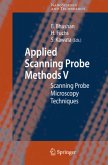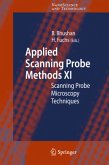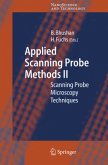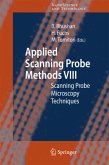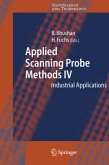Crack initiation and growth are key issues when it comes to the mechanical reliab- ity of microelectronic devices and microelectromechanical systems (MEMS). Es- cially in organic electronics where exible substrates will play a major role these issues will become of utmost importance. It is therefore necessary to develop me- ods which in situ allow the experimental investigation of surface deformation and fracture processes in thin layers at a micro and nanometer scale. While scanning electron microscopy (SEM) might be used it is also associated with some major experimental drawbacks. First of all if polymers are investigated they usually have to be coated with a metal layer due to their commonly non-conductive nature. Additi- ally they might be damaged by the electron beam of the microscope or the vacuum might cause outgasing of solvents or evaporation of water and thus change material properties. Furthermore, for all kinds of materials a considerable amount of expe- mental effort is necessary to build a tensile testing machine that ts into the chamber. Therefore, a very promising alternative to SEM is based on the use of an atomic force microscope (AFM) to observe in situ surface deformation processes during straining of a specimen. First steps towards this goal were shown in the 1990s in [1-4] but none of these approaches truly was a microtensile test with sample thicknesses in the range of micrometers. To the authors' knowledge, this was shown for the rst time by Hild et al. in [5]. 16.
From the reviews: "Vol. XII contains nine contributions ... of SPM applications on a variety of systems including biological systems for the measurement of receptor-ligand interaction, the imaging of chemical groups on living cells, and the imaging of chemical groups on live cells. These biological applications are complemented by nearfield optical microscopy in life science ... . Each chapter ... will make profitable reading for researchers at all experience levels. ... All the chapters are ... beautifully illustrated and in color too, also along with graphs, equations etc." (Current Engineering Practice, 2009) "The articles ... are written in sufficient detail, so that university students, researchers and engineers can understand the physics of the instruments, the design and construction of the devices and the cantilevers, the signal processing algorithms, and their use in imaging and the surface characterization of the specimens. ... highlight various studies, techniques and applications that permit us to image, modify, fabricate and control structures at the molecular and atomic level. ... well-written and clearly illustrated." (Barry R. Masters, Optics & Photonics News, September, 2009)


